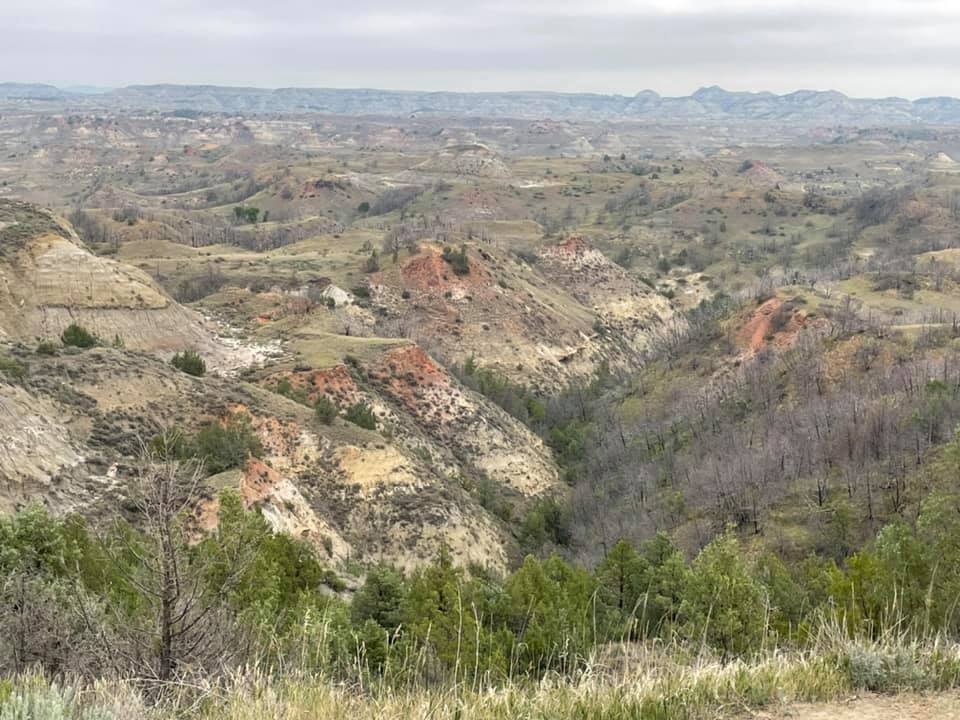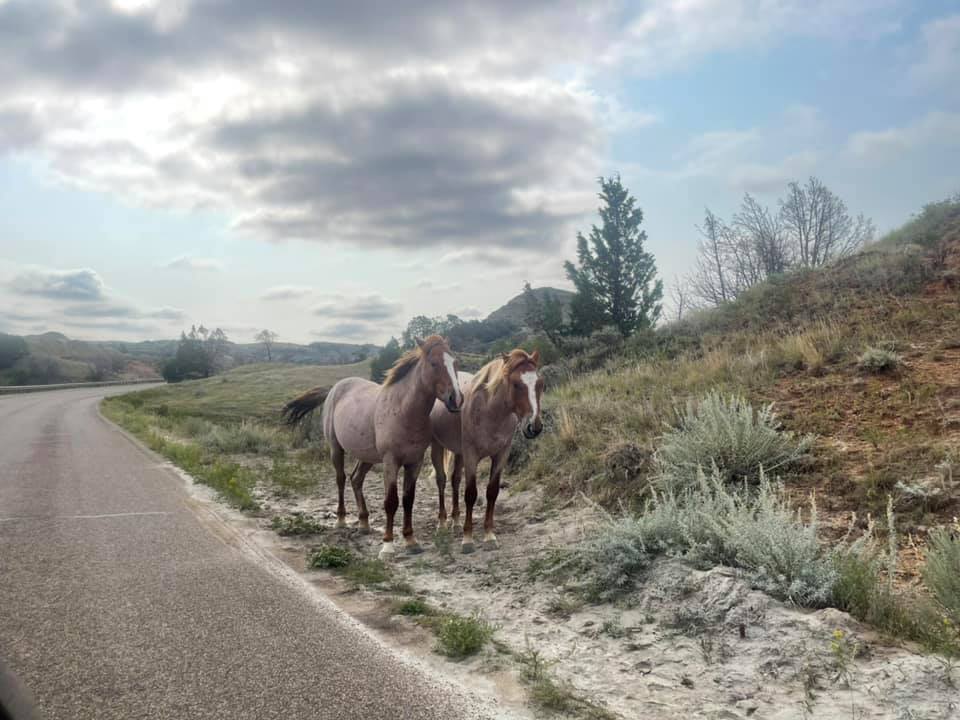North Dakota is a state located in the Midwestern region of the United States, known for its vast prairies, rich agricultural heritage, and strong sense of community. North Dakota is home to several Native American tribes, including the Mandan, Hidatsa, Arikara, and Sioux (Lakota and Dakota). The state’s numerous lakes, rivers, and parks provide ample opportunities for outdoor enthusiasts to explore and enjoy nature.
North Dakota’s history is rooted in indigenous cultures dating back thousands of years before European exploration. In the 18th century, French fur traders ventured into the region, followed by American explorers Lewis and Clark in the early 19th century. Settlement accelerated with the arrival of the railroad in the late 19th century, leading to statehood in 1889. Agriculture, particularly wheat farming, became central to the state’s economy, with oil discovery in the 20th century further shaping its development.
Today, North Dakota blends its agricultural heritage with modern energy production, education, and outdoor recreation.
Regions
North Dakota is typically divided into three distinct regions:
- Red River Valley: Located in the eastern part of the state, the Red River Valley is known for its flat terrain and fertile soil. It’s an important agricultural area, producing crops like wheat, soybeans, and sugar beets. Cities such as Fargo and Grand Forks are located in this region.
- Badlands: Situated in the western part of North Dakota, the Badlands are characterized by rugged terrain, buttes, and canyons formed by erosion. Theodore Roosevelt National Park is located in this region, attracting visitors with its scenic beauty and wildlife.
- The Missouri Plateau: This region covers the central part of North Dakota and includes areas like Bismarck, the state capital. It features rolling hills, river valleys (including the Missouri River), and expansive grasslands. Agriculture and energy production are key economic activities in this region.
The Same
Both the Dinks and the Family had the opportunity to explore Theodore Roosevelt National Park in North Dakota Badlands as part of a cross-country road trip, albeit with differing experiences. With wildlife, it is always a different experience each and every time.
BadLands – Theodore Roosevelt National Park
Named after the 26th President of the United States, Theodore Roosevelt, this national park is divided into three units and offers stunning landscapes, including badlands formations, grasslands, and scenic overlooks.
Visitors can enjoy hiking, wildlife viewing, and learning about the area’s natural and cultural history. The park is renowned for its stunning landscapes, which include colorful badlands formations, rugged canyons, rolling prairies, and the meandering Little Missouri River.
We both loved this park and highly recommend going out of your way to stop here.
Wildlife Viewing:
Theodore Roosevelt National Park is home to a variety of wildlife, including bison, elk, deer, prairie dogs, wild horses (feral horses), and numerous bird species. Wildlife enthusiasts can spot these animals throughout the park, particularly in the early morning and evening hours when they are most active.
Wildlife Loop:
The Wildlife Loop is a scenic drive that winds through the park’s South Unit, offering visitors the chance to observe a variety of wildlife in their natural habitat. Along the loop, you may encounter bison, elk, deer, prairie dogs, and numerous bird species. Be sure to drive slowly and keep a lookout for wildlife, as they may be grazing near the road or crossing the roadway. Theodore Roosevelt National Park is home to a healthy population of bison, which roam freely throughout the park’s grasslands and badlands. Visitors often have the opportunity to see these majestic animals grazing in the open prairies or crossing the park’s scenic roads. They are everywhere. You can’t miss the Bison.
Prairie Dog Town:
This trail offers visitors the chance to observe prairie dogs in their natural habitat. The one-mile hike from the Caprock-Coulee parking area is relatively easy and well-marked with signs. Along the trail, you’ll likely encounter these curious little creatures popping up from their burrows and chirping to communicate with each other. We loved listening to their chirp-like barks and quickly noticed their little tails wag at the same time almost like it is pushing the squeak out of their mouths.
Hiking and Outdoor Recreation:
The park offers a network of scenic hiking trails that wind through its rugged terrain, providing opportunities for hikers of all skill levels to explore the park’s natural beauty up close. Popular hikes include the Wind Canyon Trail, Caprock Coulee Trail, and the Petrified Forest Loop Trail. See highlights of trails we each took below.
Historic Sites:
Theodore Roosevelt National Park preserves significant historical sites associated with Theodore Roosevelt’s time in the North Dakota Badlands during the late 19th century. Visitors can explore Roosevelt’s Maltese Cross Cabin, which he used as a hunting lodge, as well as the Elkhorn Ranch site, where he spent time contemplating nature and formulating his conservation philosophy.
Local Cuisine
While our travel styles may diff, we both prioritize indulging in the local cuisine. Exploring North Dakota’s culinary offerings allows you to appreciate its agricultural roots and regional flavors, showcasing a blend of Native American, Scandinavian, and Midwestern influences.
- Frybread: A traditional Native American food, frybread is deep-fried dough served with various toppings like honey, powdered sugar, or as a base for tacos.
- Walleye: North Dakota offers excellent fishing, particularly for walleye, a freshwater fish known for its delicate flavor and flaky texture. Enjoy it pan-fried or grilled.
- Bison: Bison ranching is prominent in North Dakota, offering lean and flavorful meat. Bison burgers, steaks, and stews are popular choices.
- Chokecherry: A wild berry native to the region, chokecherries are used to make jams, syrups, and desserts like chokecherry pie.
- Chislic is a traditional dish from South Dakota, but also common in North Dakota. It consists of cubed red meat, typically lamb or beef, that is seasoned and deep-fried or grilled.
The DINKs
Since we were on a cross-country road trip, we only had a single day in North Dakota. We stayed in Dickson, ND the night before and spent the day at the park. These trails and points of interest provide visitors with a wonderful opportunity to explore the natural beauty and wildlife of Theodore Roosevelt National Park’s South Unit. Whether you’re interested in observing prairie dogs, taking in panoramic views, or immersing yourself in the tranquility of nature, these hikes offer something for everyone to enjoy. Just be sure to follow the signs and stay on designated trails to protect the park’s fragile ecosystem and ensure a safe and enjoyable experience for all.
Buck Hill:
Located in the South Unit, Buck Hill is a short 15-minute hike from the trailhead and offers stunning panoramic views of the surrounding landscape. At 0.2 miles, it’s a quick but rewarding ascent to the highest accessible point in the park, where you can take in the sweeping vistas of the badlands below. Short and sweet, how could we not enjoy.
Painted Canyon Nature Trail:
This trail provides an opportunity to hike down into Painted Canyon and get up close and personal with the park’s wildlife and unique geological formations. The 45-minute, 0.9-mile hike offers breathtaking views of the colorful canyon walls and the chance to spot wildlife such as bison, deer, and birds of prey. This is more of a hike than Buck hill but if you can make it, we enjoyed getting into the badlands.
Colvane Trail:
The Colvane Trail is a one-mile loop hike that winds through juniper trees and offers a peaceful and scenic escape into nature. Along the trail, you’ll have the opportunity to observe the park’s diverse plant life and perhaps catch a glimpse of wildlife such as birds and small mammals.
The Family
As our journey was a cross-country road trip, we had just one day to spend in North Dakota. We didn’t do as much hiking as the Dinks but we lucked out and saw wild horses.
Wild horses
Wild horses, often referred to as feral horses, roam freely in Theodore Roosevelt National Park. These iconic animals add to the park’s natural beauty and are a testament to the rugged and untamed spirit of the American West. Visitors to the park may have the opportunity to see these majestic creatures grazing on the open prairies or galloping across the landscape, offering a glimpse into the wild and untamed landscapes that Theodore Roosevelt himself once explored. We were lucky enough to see them while traveling wildlife loop. (The dinks still don’t know how they missed the wild horses, maybe they were farther out in the pasture?)
Visitors Center
The Visitors Center serves as the gateway to Theodore Roosevelt National Park and provides visitors with valuable information about the park’s history, geology, wildlife, and recreational opportunities. Here, you can pick up maps, brochures, and other resources to help plan your visit. The center also features exhibits, interpretive displays, and audiovisual presentations that offer insights into the life and legacy of Theodore Roosevelt, as well as the natural and cultural history of the park. We always love stopping into the visitors center and learning more about what we are about to see.
Junior Rangers Program
The Junior Rangers Program is a fun and educational program designed for young visitors to learn about the park and its natural resources while earning a Junior Ranger badge. We stopped in to pick up a Junior Ranger activity booklet at the Visitors Center and complete some of the activities in it, such as nature scavenger hunts, and wildlife observation.
Learn more about our cross-country road trip, specifically our trip to North and South Dakotas at AffordableFamilyTravel.com.
Summary
In exploring North Dakota’s Badlands and Theodore Roosevelt National Park, both travelers embarked on unique journeys that highlighted the region’s rugged beauty and natural splendor. The differing perspectives brought by each visitor enriched their experiences: while one may have focused on hiking trails and capturing breathtaking vistas, the other might have immersed themselves in the park’s rich history and abundant wildlife. Whether marveling at the towering buttes or finding solace in the vast expanses of prairie, both took away memories that underscored North Dakota’s allure as a haven for outdoor enthusiasts and nature lovers alike. Each journey through the Badlands and Theodore Roosevelt National Park was a testament to the diverse ways this corner of the United States captivates and inspires those who venture here.


















Leave a Reply